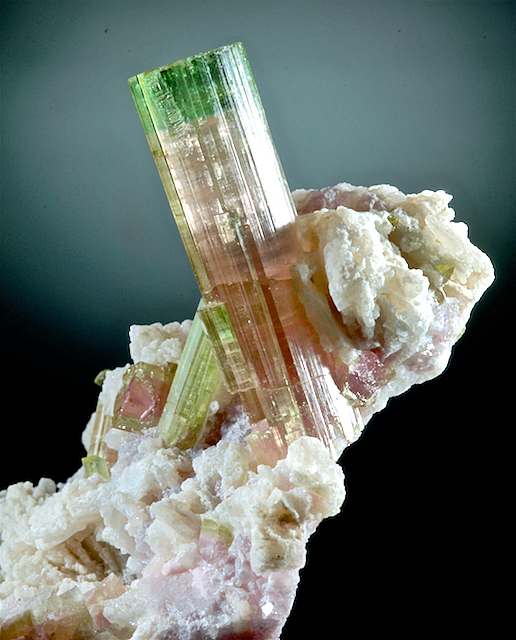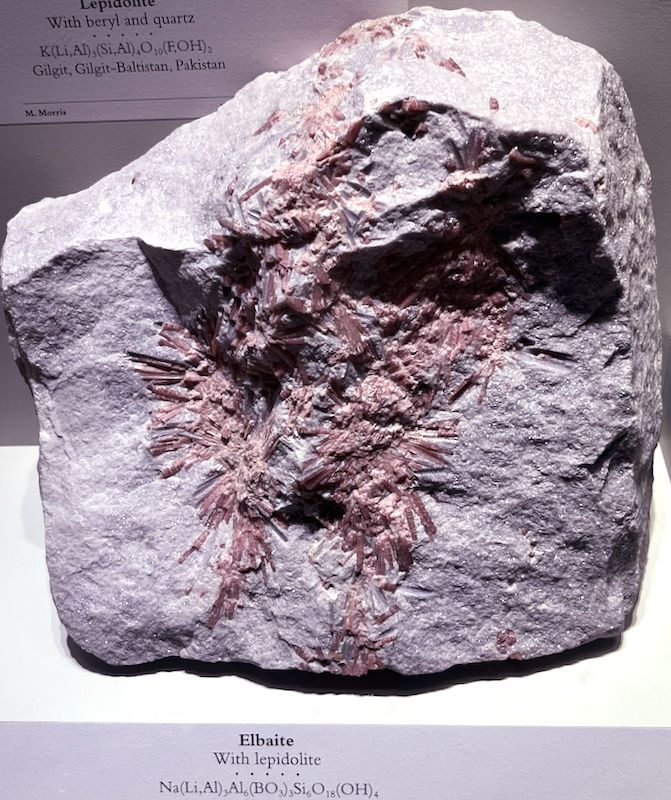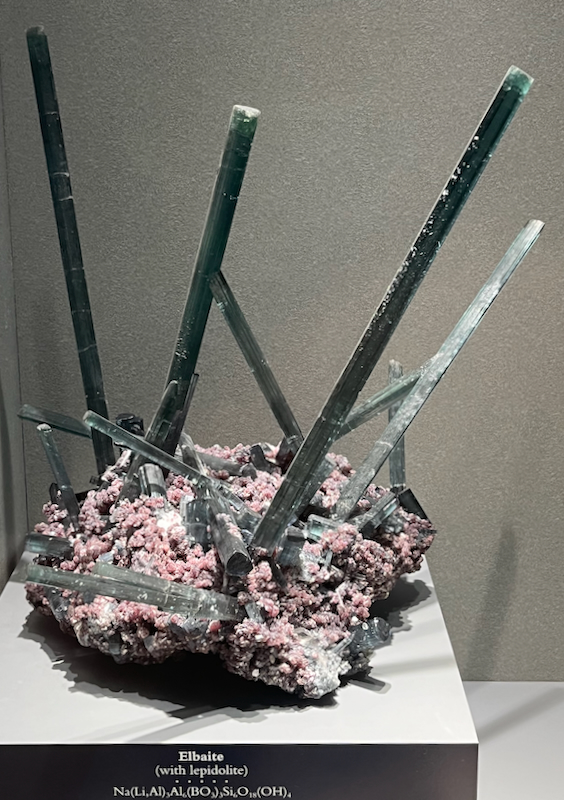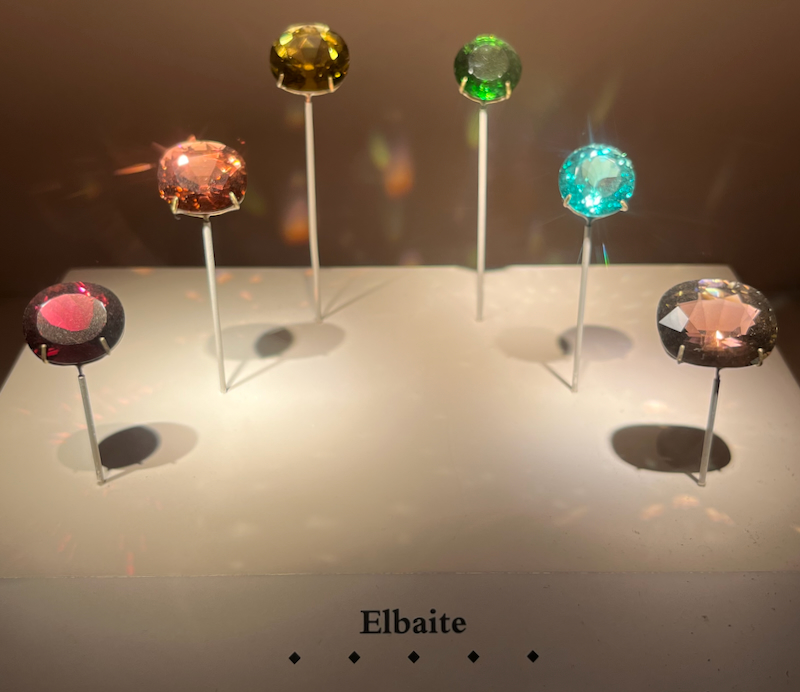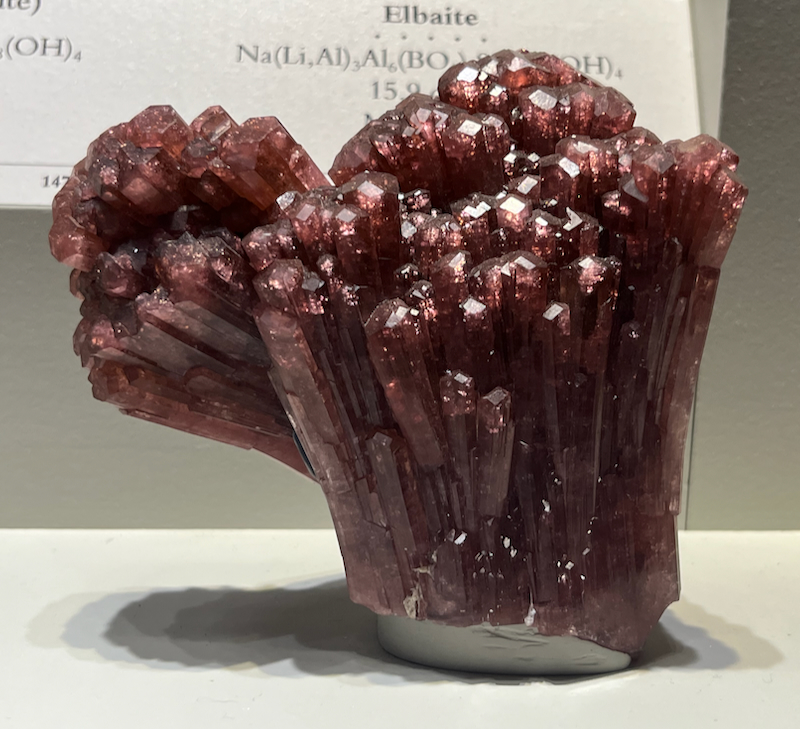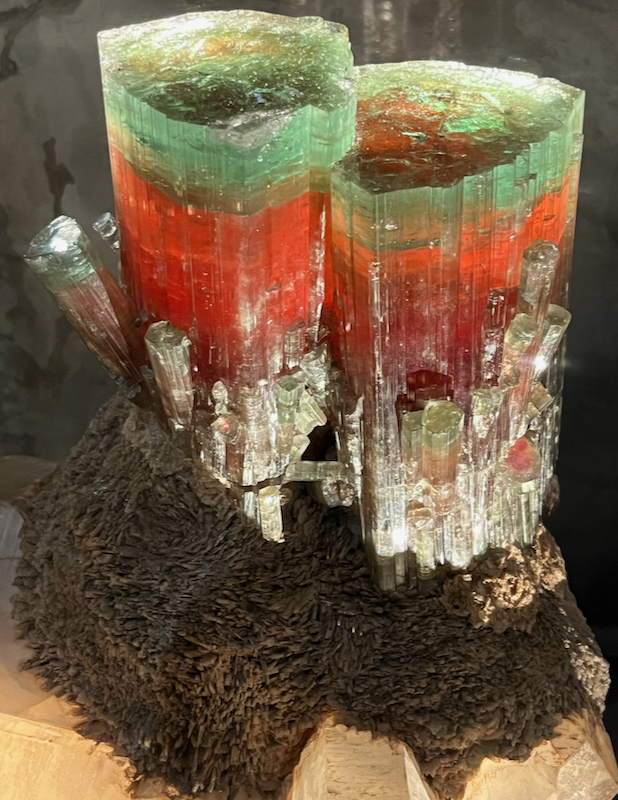Elbaite (Tourmaline)
As one of the more common gemstones, with a wide range of colors, tourmaline has many names: verdelite (green), rubellite (red), indicolite (blue), watermelon tourmaline (green and pink), schorl (black), etc. But the official name for the nonblack colors is elbaite. The name elbaite comes from the location where it was first officially found, the Island of Elba in Italy. Elbaite is a great gem to keep in its original crystal shape instead of cutting it, especially when its long rod-shaped crystals have multiple colors from top to bottom or, with watermelon tourmaline and bull’s eye tourmaline, inside to outside. Partially because its crystals are straight and long, they tend to be the “correct” standard shape if you look at them from the end—a triangle. You may notice that the formula for elbaite is pretty complicated, but that’s only half the story. Some scientists joke that it’s a “garbage can mineral” because along with the elements in its standard formula, it can include small amounts of many other elements. Well, it’s definitely the prettiest “garbage can” you’ll find. Elbaite is similar to clear quartz in that its crystals have built-in electrical properties that react to pressure, allowing them to be used in devices that measure pressure. Some people also say you can take advantage of elbaite’s electrical properties by using it in hair dryers to reduce static electricity and frizzy hair. Elbaite supposedly produces “negative ions” that cancel out the bad “positive ions.” But this isn’t a hairstyling website, so we won’t go any deeper into that!
| Formula | Group or Type | Shape | Hardness | Specific Gravity | Streak | Luster |
|---|---|---|---|---|---|---|
| Na(Al1.5Li1.5)Al6(Si6O18)(BO3)3(OH)3(OH) | Tourmaline | Trigonal | 7–7.5 | 3.0–3.2 | White | Vitreous to resinous |
